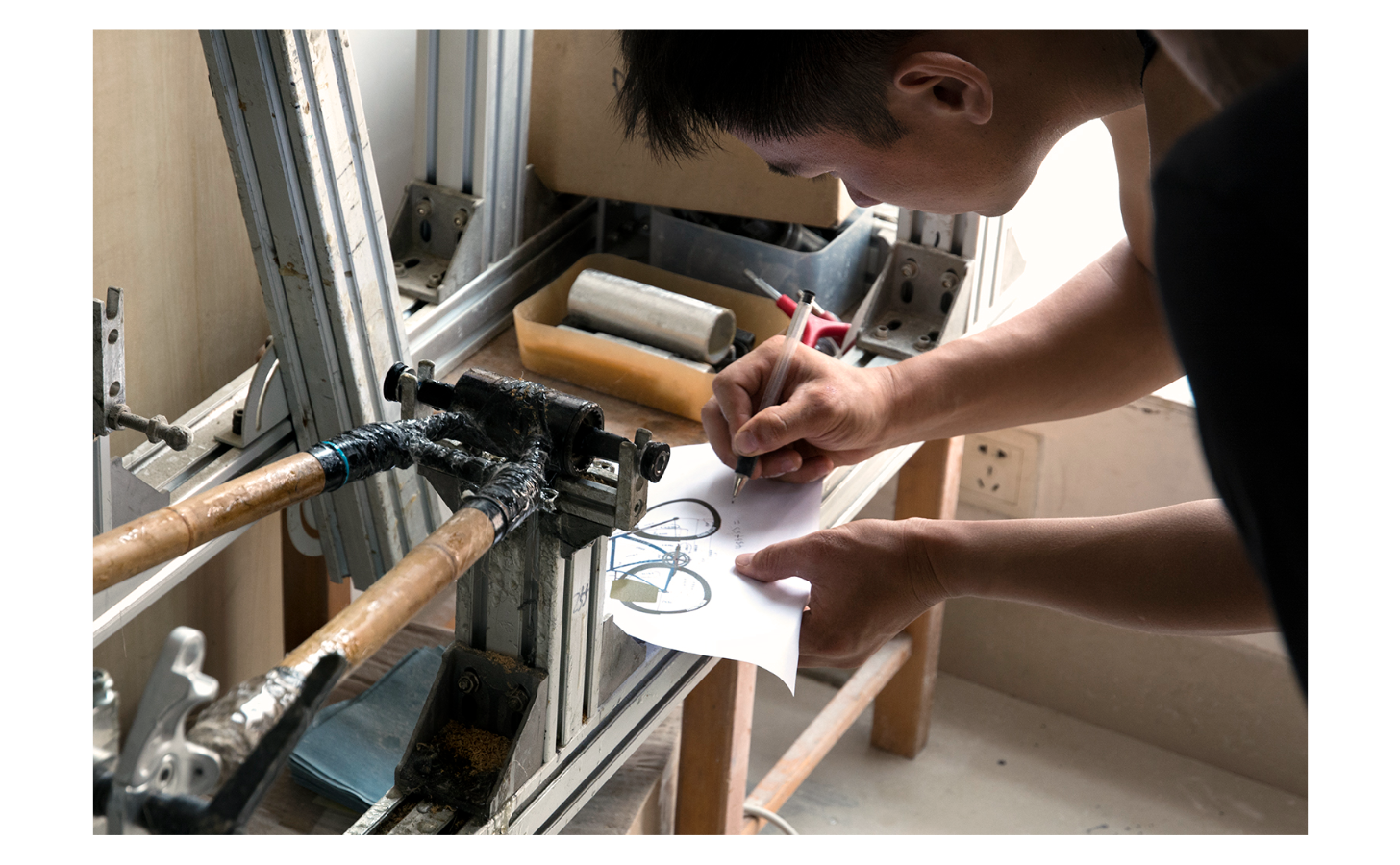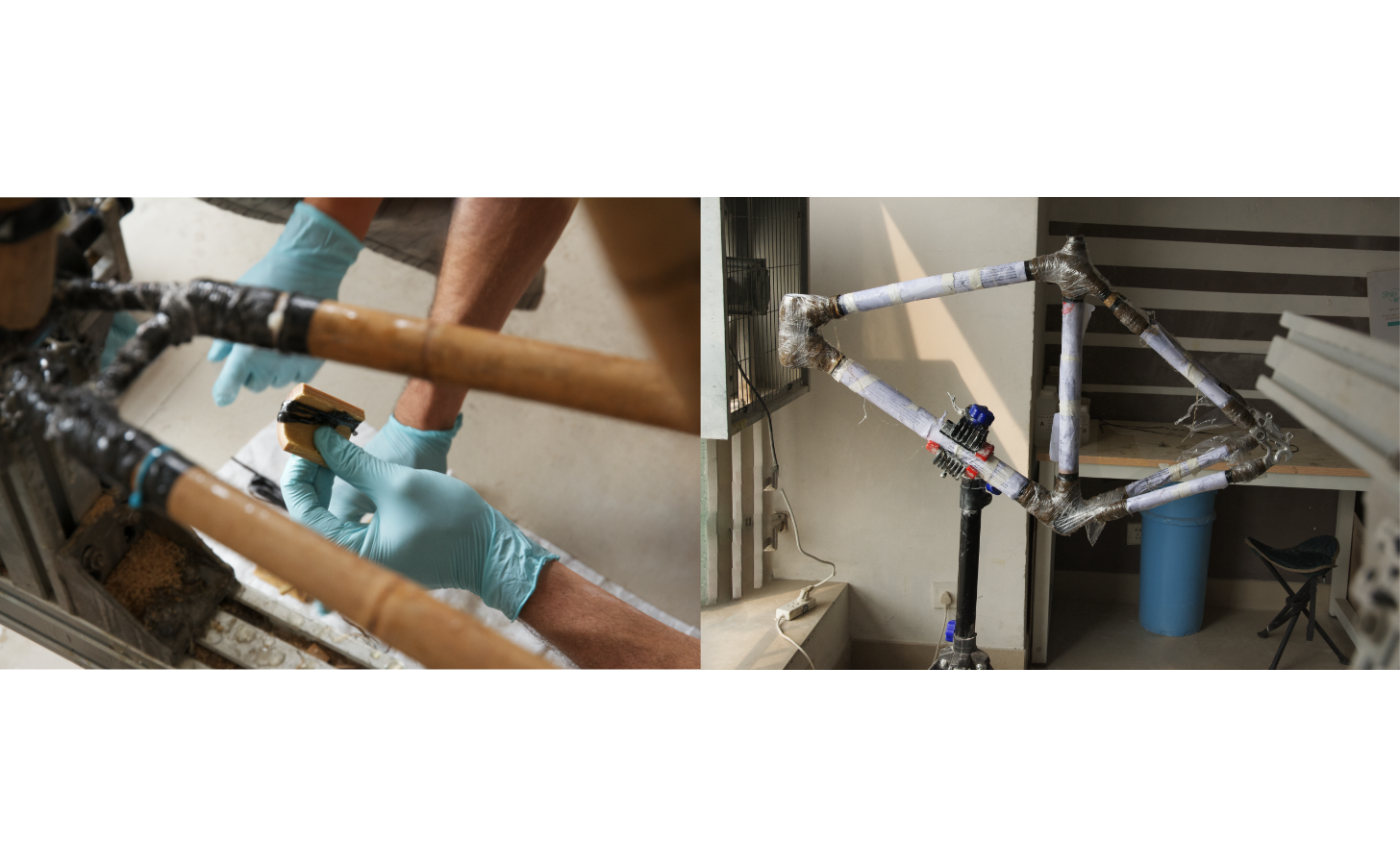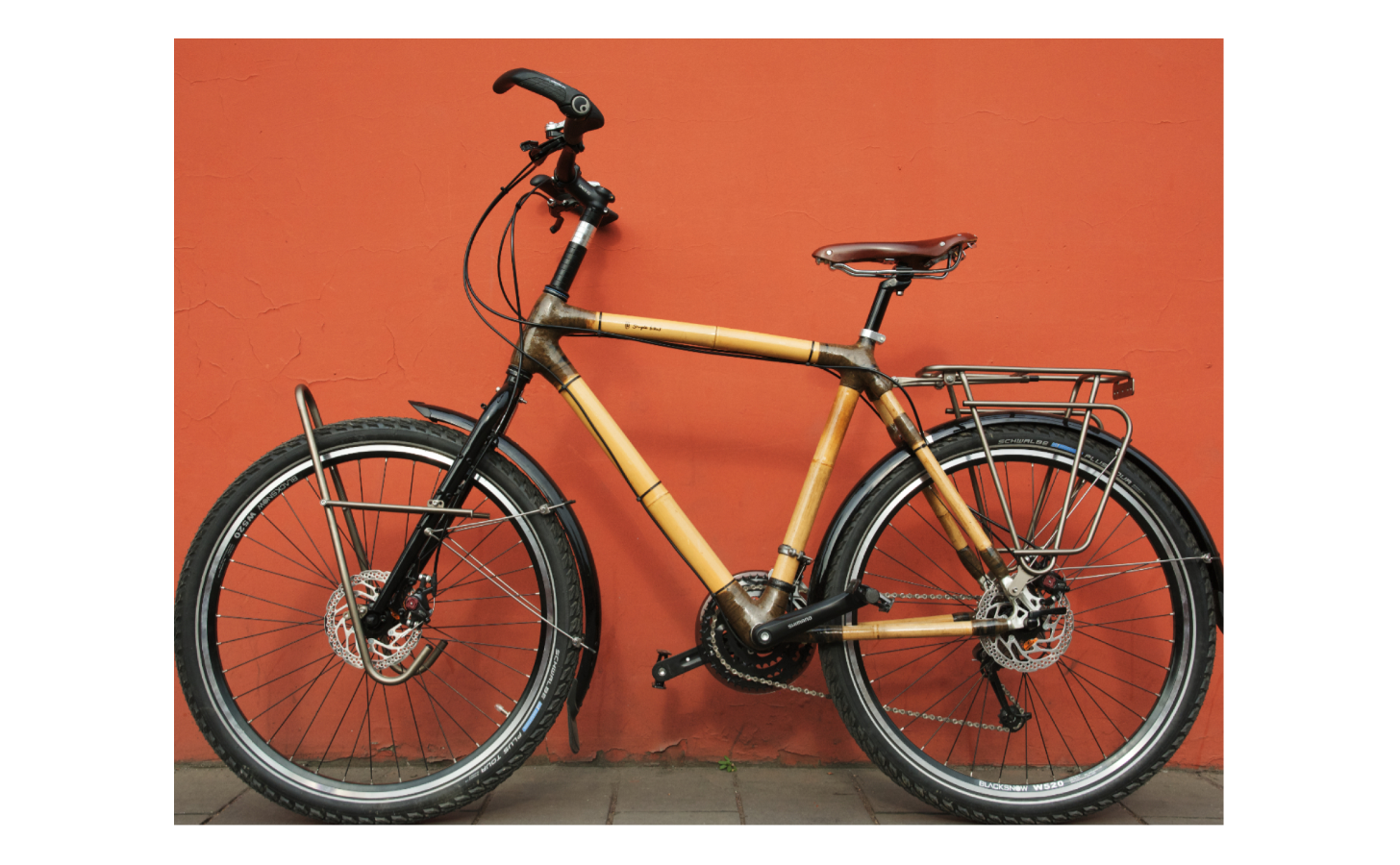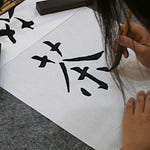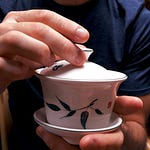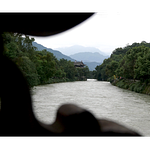It was an intensely-hot summer’s day, and bikes of every size, shape and style hung on the walls around us, each with one thing in common: they were all made of bamboo.
‘I was a designer in an automobile parts company before,’ said Abu from a stool opposite me, surrounded by the dusty tools of his busy 11th-story workshop. ‘It was a good job, but I got sick of constantly being stuck in front of a computer. One day, a colleague invited me to an event in Guǎngzhōu, displaying imported bamboo prototypes. After seeing them, I immediately thought: They look amazing! And then: I can do this.’
Tamzin and I had just located this unassuming tower block behind a Tibetan market. Chéngdū is home to more ethnic Tibetans outside their ancestral homeland than any other Chinese city, and武侯祠Wǔhóucí, the west-central district where Abu’s workshop is located, is often called ‘Little Lhasa.’ 200,000 Tibetans have settled here since the Southwest University for Nationalities (SWUN), China’s top center of ethnic studies, was established here in 1951.
The area always stirs something in us, with its orange-clad monks, northwestern cuisine and mix of Tibetan and Chinese culture only visible on this scale in western China. For years, we’ve had a dream of cycling from China to the UK, and central to this vision is the image of riding out of Chéngdū’s northern frontier and into the mountains of Tibetan Sìchuān – a part of the world which left a deep impression on us when we hitchhiked through it in 2014.
While researching the ultimate bicycle for this journey, the discovery of a master-craftsman building custom bamboo frames in Wǔhóucí felt like fate.
‘These tubes are grown in Guǎngdōng, where it’s strongest and has the most evenly-spaced nodes,’ said Abu, beside a stack of beautiful, sandy-brown bamboo. ‘Before shipping, it’s soaked in 桐油tóngyóu (tung oil) and dried for six months to kill off fungus and bacteria.’ Pulling one from the rack, I brought it to my nose and inhaled deeply, but this made Abu laugh.
‘You should have smelt it when it was baking!’
‘Baking?’
‘Yeah, in that pizza oven,’ he said, pointing to a dusty, steel box beneath the workbench. ‘It hardens the bamboo, and weeds-out the weak ones. Any tubes which might crack, do crack. But the smell… it’s like竹筒饭zhútǒng fàn, that dish where they bake rice inside a bamboo trunk… I get pretty hungry in here when that thing’s on!’
We began cutting the bamboo down to size, following the blueprints Abu had drawn up based on our body measurements. While modifying the end of a top tube with a hole saw, I was abruptly introduced to bamboo’s unpredictable nature when it jerked in the vice and split down the middle.
‘You’re pushing too hard,’ said Abu nonchalantly, tossing the tube into a bin of broken misfits. ‘The fibers are too strong, you can’t force bamboo...’
About an hour passed before we were mounting the pieces onto a specialized clamp system, which held them together in the distinctive diamond shape of a bicycle frame. Seeing them assembled brought home how ludicrous it seemed. Would these sticks really carry our weight across the Eurasian landmass?
It got me thinking about the miracle of this giant grass, capable of growing 1.5 inches per hour and used for everything from chopsticks to floorboards, that has played such a fundamental role in Chinese civilization. One only has to look at written Mandarin to see how embedded it is within Chinese culture. Bamboo’s character 竹zhú appears as a component inside thousands of other words. Essential items like 筏fá (raft) and笆bā (basket) evoke a straightforward image, whereas筋jīn (muscle or tendon) hints at an even more profound connection, between bamboo and our very bodies.
However, Abu explained that many Chinese customers have reservations about the material’s suitability as a substitute for metal in bicycles. ‘In China, bamboo is known as a cheap, old-fashioned material,’ he explained. ‘People worry it’s not strong enough for bikes.’
Far from deterring him, this made Abu more determined to build a superior product, while prioritizing safety concerns. One big step in this direction was sending the bikes to Bureau Veritas, where they were subjected to industrial stress-testing, certifying them as road-safe in the EU.
But he wasn’t satisfied until he’d completed his own gruelling rite of passage. While Abu is a汉族Hànzú (Han Chinese), he grew up in the Tibetan capital of Lhasa, where he got his nickname, meaning ‘Uncle’ in Tibetan. It seemed only right that he should pedal the iconic, high altitude 2500km route that many Chinese riders only dream of.
‘It was a really special feeling to ride a bike I’d built with my own hands back to my hometown,’ he recalled fondly. ‘And it proved that they can endure every type of weather: rain, sun, snow… You’ll experience all of that on your trip, plus a little more!’
With our tubes secured in place, over the next couple of days we went about the messy process of sticking them together, first using long spools of carbon and then hemp fibre grown in Zhèjiāng province, both dunked in masses of epoxy. This stage was intense—the epoxy got hotter the more we handled it, drying in the 37-degree heat and creating dizzying fumes that our pollution masks couldn’t totally filter out. When the frames were wrapped and left to dry they looked insane, as if held together by melted baklava, but a lot of sanding and varnishing later, they transformed into what I maintain are the coolest bike frames I’ve ever seen. Each one had distinct markings, with the hemp fibres suspended in the epoxy like a fly in amber.
Once the frames were finished, choosing, ordering and waiting for delivery of the remaining components took many weeks, and the chill of Autumn had crept in by the time we were loading them onto our electric scooter. Gripping a box of forks, cranks, bars and stems with my shins while Tamzin hugged a huge bag of wheelsets and tyres behind me, I drove precariously down Jiǔlǐdī South Road towards the workshop.
In any western setting we’d look eccentric and frankly dangerous but jostling for space around us were other battery-powered vehicles laden with meat, building materials, rolls of textiles or mountains of recycling. Galvanised by our sense of purpose, we experienced a rare thing in China: inconspicuousness.
‘You guys put on the tires, I’ll assemble the headsets,’ said Abu’s bike mechanic Jake, wasting no time in grabbing tools and throwing himself into the build. His tall, wiry frame worked at speed as the bikes seemed to materialize around him, stopping only when we asked him questions, which was often. For our future cycle tours, it was important we took part in this part of the build, and we had no qualms about hindering Jake’s progress.
We had low expectations for how the bikes would look once assembled, as our aspiration during research had been what cycle-touring blogger Tom Allen calls the ‘superficial dullness’ of good touring bicycles. We chose simplicity, comfort and indestructibility over flashiness, weight-saving or ‘performance.’ But as the hardy, tried-and-tested components came together, what emerged were bikes that looked not only rugged, but elegant in a way we hadn’t envisioned.
Thick tyres squeaked on tiles as Tamzin bombed down the 11th-story corridor on her finished bicycle. A nail salon worker didn’t so much as look up, as a grinning foreigner tested her breaks inches from her shop window.
We felt ready to ride around the world that day, cycling out of Abu’s workshop on our newly built bikes. But much has happened since then to make overland travel difficult, not least a total shutdown of Central Asian land borders due to Covid19 and now a full scale war in Europe. Our plans, and our lives, are intimately connected with global events beyond our control: a reality which was always the case, but has recently taken center stage.
We’re not ready to give up on our cycling dreams yet. These bikes were not an impulse buy: they required planning, patience, persistence and resourcefulness. And it just so happens that those are the very same qualities we will need while confronting a more turbulent moment in the human story.
Thank you for reading. If you enjoyed this post, stay tuned and subscribe to the newsletter if you haven’t already. Our adventures are put on hold at the moment due to tightened Covid19 restrictions in the city, as well as a relapse in our dogs’ separation anxiety. But don’t worry, we’ll take you along on a different kind of building project.
On 17th March, we will release a video sharing the work we are doing to build up our dogs’ confidence. For more content and updates in the meantime, go follow us on Instagram and Twitter.



